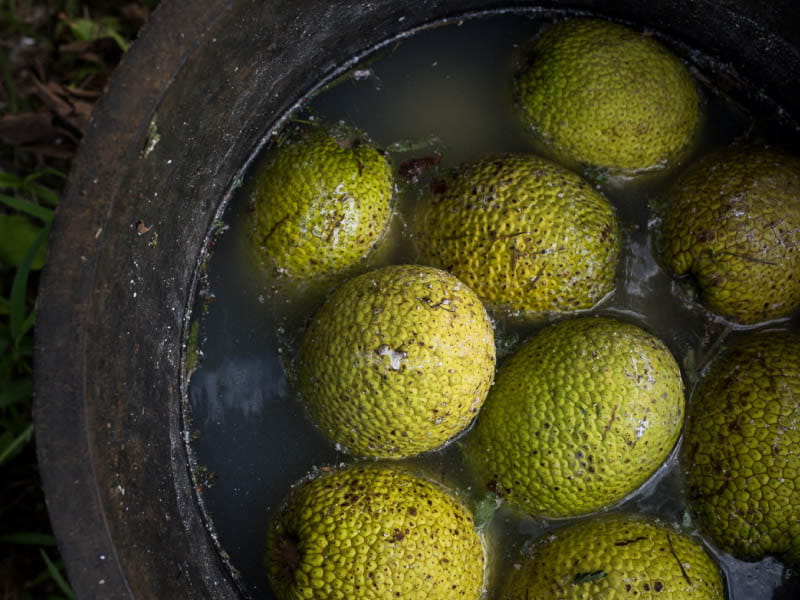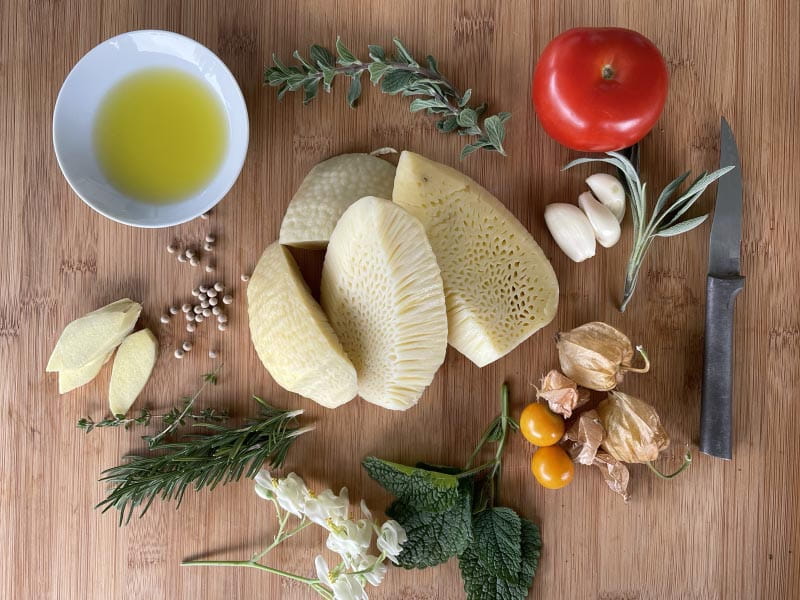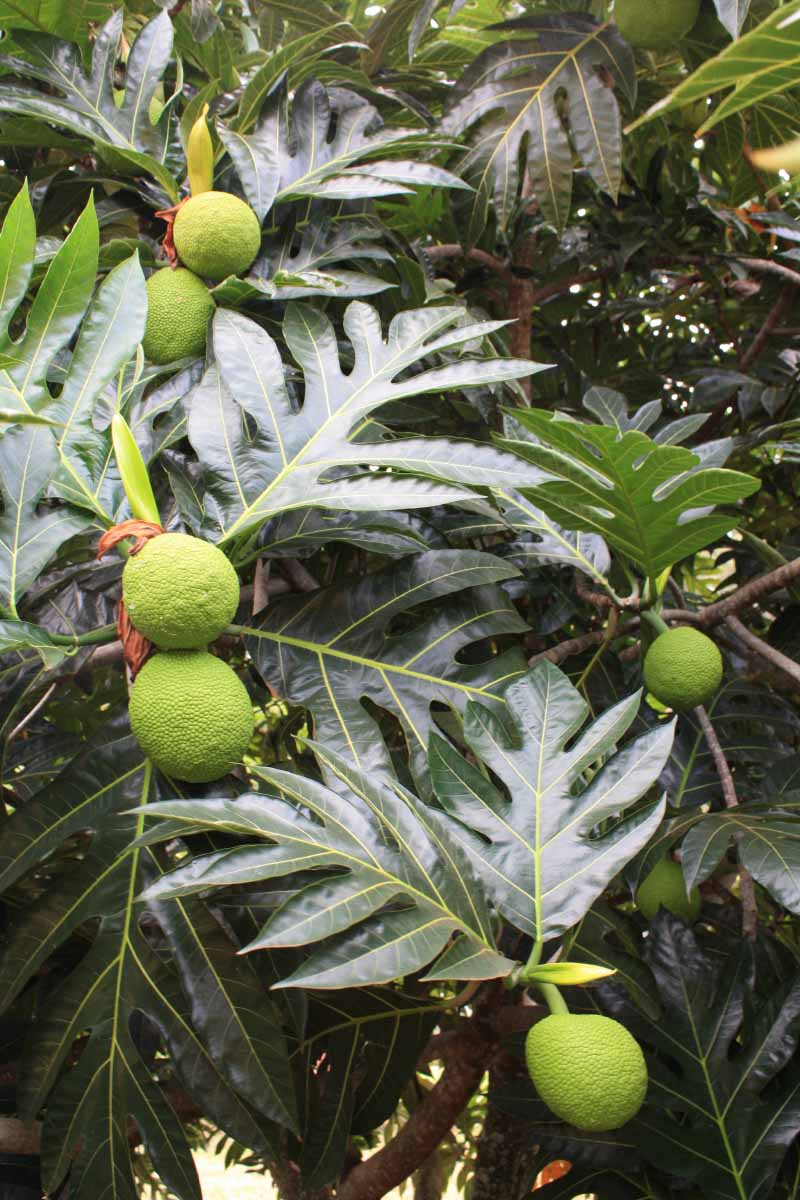Revered by Hawaiians, 'ulu provides a lifetime of nourishment
By Laura Williamson, American Heart Association News

Pineapples and Hawaii may go together like leis at a luau, but there's a far less iconic fruit growing in the South Pacific that Hawaiians have revered for generations. The 'ulu, also known as breadfruit, is considered a symbol of resilience, perseverance and security because the nutrient-dense, fiber-rich fruit can provide a lifetime of nourishment.
Legend has it the 'ulu first appeared during a period of famine when Kū, the Hawaiian god of farming and fishing, transformed himself into an 'ulu tree to feed his family.
Other stories suggest the tree was brought to the island of Oahu from Samoa or Tahiti during the 12th century or that Hawaiian fishermen found it when they were blown off course and landed in the mythical realm of Kanaloa, the god of the sea.
Whatever its origins, 'ulu has been a staple in the South Pacific for centuries. Its name means "to grow" in Hawaiian.
"'Ulu is so hearty and versatile," said Michelle Grove, a registered dietitian nutritionist and regional director of dietary services for Hawaii Health Systems Corporation's West Hawaii Region. "It has a great nutrient profile and can be used in many different recipes, from sweet to savory."
The fruit, which can grow as big as a small basketball, has numerous nutritional benefits, she said. "Because it's a complex carbohydrate, it has a good amount of fiber, so it's lower on the glycemic index. It slows digestion; helps to keep you fuller longer."
It contains nearly three times the fiber contained in brown rice and 12 times the amount in white rice. Dietary fiber helps lower cholesterol levels and the risk for heart disease, stroke, obesity and Type 2 diabetes.
'Ulu also is low in sodium, cholesterol and saturated fats and high in vitamin C.
And, while it is a starch, 'ulu contains protein. It has a higher percentage of essential amino acids than soybeans. Essential amino acids are the kind our bodies cannot make, so we must get them from food. They help break down food, grow and repair body tissues, boost the immune system, make hormones and other brain chemicals, build muscle and maintain a healthy digestive system.
People eat breadfruit in a variety of ways, Grove said. It can be steamed and broken apart or cubed for use in stews or stir-fry dishes. It can be made into a gluten-free flour or sold ripe and frozen for use in baking. It can be used as a substitute for sugar and butter because of its sweet taste when ripe. It can also be roasted over a fire. It is sometimes cooked in an imu, an underground steam pit used in luaus.
"In the hospital, we like to make it fun and fancy and serve it as a gluten-free or vegan option," Grove said. "My favorite is our tofu 'ulu stir-fry with bok choy, served with a sweet and sour glaze. It just melts in your mouth."

The 'ulu tree provides more than nutrition. According to the Hawai'i 'Ulu Cooperative, every part of the tree had a traditional use. The trunks and limbs provided wood for houses, canoes, surfboards, firewood and musical instruments. The inner bark was beaten into a cloth and made into rope. Sap was used for waterproofing and caulking and as glue on cloth used to catch birds. Leaves were used as sandpaper and serving platters. Flowers from the trees were used to make leis. And ripe fruit and leaves could be used as animal feed or fish bait.
The tree's sap, stems and leaves also had medicinal purposes, used to treat everything from broken bones to ear infections and headaches.
Grove said the cooperative encourages people to plant 'ulu trees and produce more 'ulu-related products so they can become less dependent on produce shipped in from other sources. "The 'ulu fruit is not only healthier for us, it can help support our economy and help us to be more self-sufficient," she said. "We want to put that money back into our people."
Historically, she said, 'ulu has played an especially critical role during droughts and severe weather events, such as cyclones across the Pacific islands, when other food sources become scarce. The massive fruit gets buried under the sand when high winds whip across the islands. "When everything else gets destroyed, you can dig up the breadfruit and feed everybody while you're rebuilding."

Similarly, breadfruit has played an important role in the Caribbean, keeping people fed when hurricanes wreak havoc. It was brought to Jamaica and other Caribbean islands in the late 18th century, making the voyage with British Capt. William Bligh on the ill-fated HMS Bounty and again on the HMS Providence after the mutineers threw the fruit overboard.
The tree is so revered in Hawaii, it is customary to plant one after a loved one has died, Grove said.
"It would be considered almost a portal into the afterlife," she said. "When it fruits, it signifies a rebirth, coming from the ancestors to provide for the new family."





